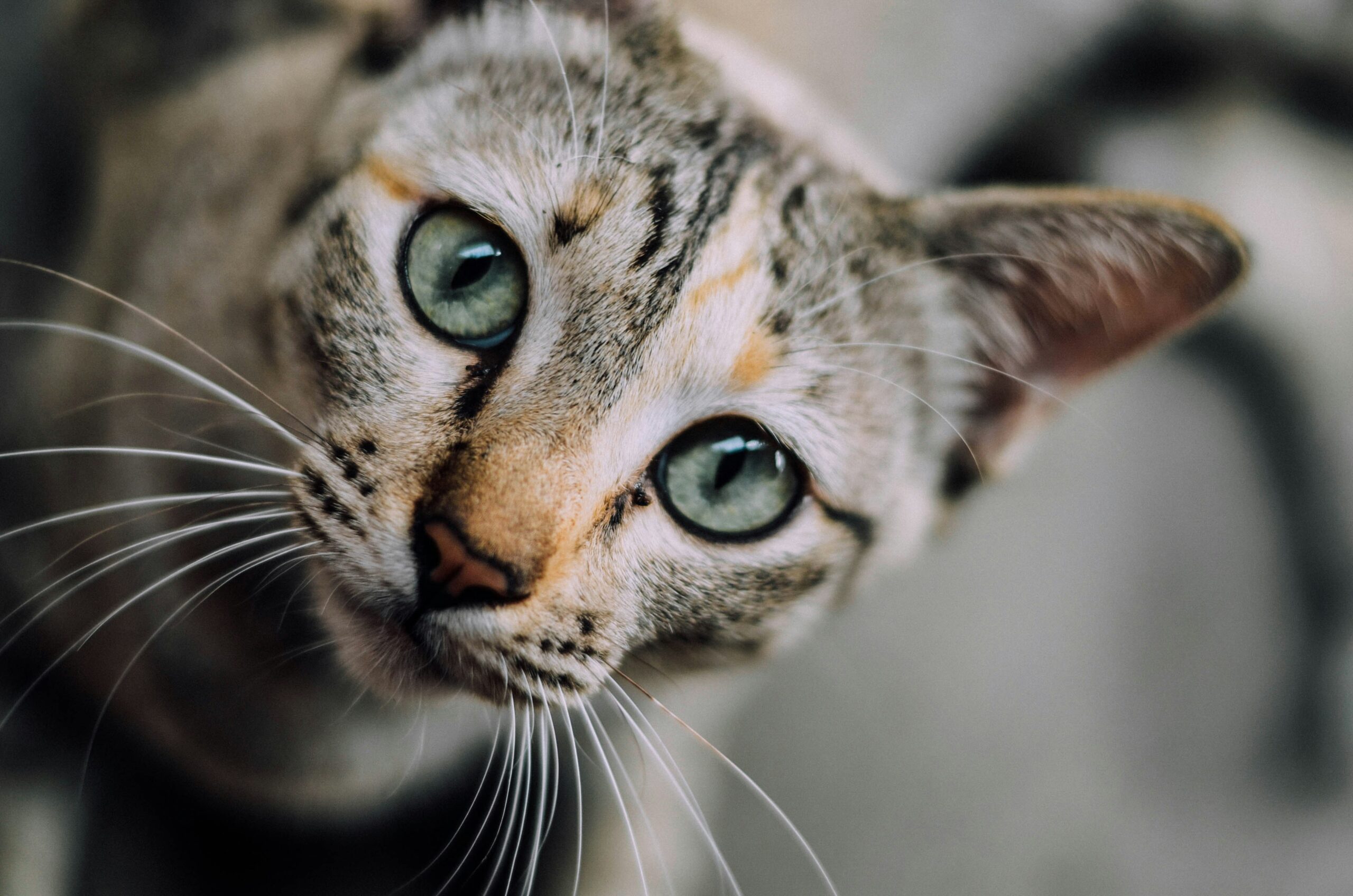Rabies is a critical viral disease that poses serious health risks for cats. Understanding its signs and symptoms plays a vital role in protecting your feline friend. Common indicators include behavioral changes, physical signs of infection, and other health concerns. Additionally, it’s essential for pet owners to know that while focusing on symptoms, questions about diet, such as "can cats eat spinach," often arise when considering overall cat health. This guide will help you identify rabies in your cat effectively and emphasize the importance of preventive measures.
Understanding Rabies and Its Impact on Cats
Rabies is a viral disease that affects the central nervous system of mammals, including cats. This serious illness is typically transmitted through the bite of an infected animal and can lead to severe health complications or even death if left untreated. Here are some key points to understand about rabies and its impact on cats:
- Transmission: Cats can contract rabies primarily through bites from infected wildlife, such as bats or raccoons.
- Symptoms: Early signs include changes in behavior, such as increased aggression or withdrawal. As the disease progresses, symptoms may escalate to paralysis and respiratory failure.
- Fatality: Once clinical signs appear, rabies is almost always fatal. Prompt veterinary care is essential if exposure is suspected.
While discussing the health of cats, some pet owners may wonder, “can cats eat spinach?” Although spinach is not related to rabies, it’s important to ensure that your cat receives a balanced diet to maintain overall health—an unwell cat may be more vulnerable to infections. Keep vaccination up to date to protect against rabies and other serious diseases.
Common Symptoms of Rabies in Cats
Recognizing the common symptoms of rabies in cats is crucial for early detection and treatment. Rabies progresses through stages, with symptoms varying at each phase. Here are some notable signs to watch for:
Initial Phase:
- Behavioral Changes: Sudden increased aggression or fear.
- Lethargy: Unusual tiredness or reluctance to engage in activities.
Excitative Phase:
- Erratic Behavior: Hyperactivity or unusual vocalization.
- Disorientation: Difficulty in navigating familiar environments.
Paralytic Phase:
- Weakness: Noticeable loss of strength, starting in the hind legs.
- Difficulty Swallowing: Signs of distress while eating or drinking.
Hydrophobia: Fear of water, as the cat may refuse to drink.
These symptoms might mimic other illnesses. Therefore, it’s vital to consider other factors when assessing your cat’s health, although these specific symptoms can indicate rabies.
In summary, being vigilant about the common symptoms of rabies in cats can aid in seeking prompt veterinary attention, as timeliness is essential in managing this deadly disease.
Behavioral Changes to Watch For
Detecting rabies in cats often requires keen observation of their behavior. Changes in behavior can serve as vital clues. Here are some key behavioral symptoms to look out for:
- Aggression: A normally docile cat may become hostile, showing unprovoked aggression.
- Lethargy: A decrease in activity or prolonged periods of rest can indicate illness.
- Fearfulness: Increased anxiety or an unusual level of fear, especially towards people or other pets, may signal distress.
- Social Withdrawal: A cat that typically enjoys interaction may isolate itself during the early stages of rabies.
- Vocalization Changes: Uncharacteristic yowling or constant meowing can occur, reflecting confusion or disorientation.
Remember, if you’re concerned about your cat’s health, consider seeking veterinary advice immediately. Although the query "can cats eat spinach" doesn’t relate directly to rabies, ensuring your cat’s overall health through proper nutrition can bolster their immune system, helping to resist various diseases. Always consult with a veterinarian regarding your pet’s diet, especially when illness is suspected.
Physical Signs of Rabies Infection
Recognizing the physical signs of rabies in cats is crucial for timely intervention. As the disease progresses, cats exhibit distinct changes that owners should monitor closely. Here are some key physical symptoms to watch for:
- Fever: Initially, a cat may run a high temperature, signaling infection.
- Excessive drooling: Rabies affects the cat’s ability to swallow, leading to drooling or frothing at the mouth.
- Dilated pupils: Look for unusually large pupils, which indicate neurological effects of the virus.
- Sensitivity to touch: Infected cats may flinch or react aggressively when touched due to heightened sensitivity.
- Changes in gait: A staggering or unsteady walk can suggest neurological impairment caused by the virus.
- Seizures: In severe cases, rabies can lead to seizures or convulsions, reflecting the progression of the infection.
While you may wonder, "can cats eat spinach?", it’s crucial to focus on their health first. Rabies is a fatal disease; hence, if you notice any of these signs, contact your veterinarian immediately. Early diagnosis is vital in managing your cat’s health effectively.
Differences Between Rabies and Other Illnesses
Identifying rabies in cats can be challenging due to overlap with other illnesses. Here’s how to differentiate rabies from other common feline health issues:
Key Distinctions
Symptoms Onset:
- Rabies: Symptoms typically appear 2-8 weeks after exposure. Initial signs include behavioral changes, fever, and aggression.
- Feline Panleukopenia: Symptoms appear suddenly and often include vomiting, diarrhea, and lethargy.
Behavioral Changes:
- Rabies: Cats may exhibit aggression or extreme fearfulness. They may also become unusually affectionate.
- Feline Distemper: Commonly involves depression and loss of appetite without the extreme aggression seen in rabies.
Neurological Symptoms:
- Rabies: Look for difficulty swallowing, paralysis, or seizures.
- Toxoplasmosis: Can lead to neurological symptoms as well but generally presents with lethargy and different mental states.
Quick Comparison Table
| Symptom/Condition | Rabies | Feline Panleukopenia | Feline Distemper |
|---|---|---|---|
| Behavioral Changes | Aggression/Fear | Lethargy | Depression |
| Initial Symptoms | Fever, aggression | Sudden onset | Gradual onset |
| Neurological Symptoms | Paralyzed, seizures | Rare | Possible |
Recognizing these differences can be vital for timely veterinary intervention. Always consult a veterinarian if you suspect any illness in your feline friend.
The Importance of Vaccination for Prevention
Vaccination plays a crucial role in protecting cats from rabies, a deadly viral infection that can severely impact both their health and the wellbeing of those around them. Here are several key reasons why vaccination is vital:
- Effective Defense: Vaccines stimulate the cat’s immune system, enabling it to fight off the rabies virus if exposed.
- Legal Requirement: Many regions mandate rabies vaccination for pets, which can help prevent outbreaks and protect public health.
- High Mortality Rate: Once symptoms appear, rabies is almost always fatal. Vaccination is the safest prevention.
Furthermore, some pet owners may wonder, "can cats eat spinach?" While spinach is safe in moderation, it doesn’t contribute to rabies prevention. Vaccination remains the most effective measure.
Comparison of Vaccination vs. Non-Vaccination
| Aspect | Vaccination | Non-Vaccination |
|---|---|---|
| Disease Prevention | ✔️ | ❌ |
| Legal Compliance | ✔️ | ❌ |
| Health Risks | Minimal | High |
In summary, vaccinating your cat against rabies not only safeguards their health but also contributes to community wellbeing. Always consult your veterinarian about vaccination schedules!
What to Do If You Suspect Rabies in a Cat
If you suspect that your cat may have contracted rabies, it’s crucial to act quickly and responsibly. Rabies is a serious viral disease that can be fatal if not addressed promptly. Here are the steps you should follow:
Isolate Your Cat:
- Keep your cat away from other pets and people to prevent potential transmission.
Contact a Veterinarian:
- Reach out to your veterinarian immediately for guidance. Describe any symptoms you’ve noticed.
Observe Symptoms:
- Note any behavioral changes (aggressiveness, lethargy) or physical signs (difficulty swallowing, unusual vocalizations) that accompany your concerns about rabies.
Do Not Handle Without Precautions:
- If necessary, wear gloves and use a leash or carrier for handling your cat.
Follow Medical Advice:
- Your veterinarian may recommend a thorough examination and possibly vaccination, depending on prior vaccination status.
Rabies is preventable with vaccination, so always ensure your pets are up-to-date. While you may wonder, can cats eat spinach, it’s essential to focus on rabies prevention first. Remember, early intervention is key!
How Rabies is Transmitted to Cats
Understanding how rabies is transmitted to cats is crucial for pet owners. The primary transmission method is through bites from infected animals, particularly wild ones. Here are the key points to consider:
Bite Wounds: Most cases arise from bites inflicted by rabid animals, such as raccoons, bats, or skunks.
Saliva: Rabies virus exists in the saliva of an infected animal. When it enters a cat’s bloodstream through open wounds, it poses a serious risk.
Environmental Contact: Although less common, cats can also contract rabies from contact with contaminated surfaces or infected animal body fluids.
Indirect Transmission: While rare, direct contact with rabid animal remains or even consumption can pose a threat.
It’s vital to note that outdoor cats face a higher risk of encountering rabid animals. Therefore, keeping your cat indoors and vaccinated remains the best preventive measure. Additionally, if you’re wondering "can cats eat spinach," this is unrelated to rabies but highlights the importance of proper nutrition alongside health precautions. By being proactive, you help ensure your cat’s safety against rabies.
Legal and Health Considerations
Understanding the legal and health implications of rabies is crucial for cat owners. Rabies is a deadly viral disease that not only affects animals but also poses a serious risk to humans. Key points to consider include:
Mandatory Vaccination: Many jurisdictions require that pets, including cats, receive rabies vaccinations. Failure to comply can lead to fines or legal repercussions.
Reporting Cases: If a cat exhibits symptoms of rabies, owners must notify local health authorities. This allows for appropriate public health measures to be taken.
Quarantine Regulations: In cases of suspected rabies exposure, a cat may face quarantine to monitor for symptoms, impacting owners’ responsibilities.
Health Risks to Humans: Rabies can be transmitted through bites. If a rabid animal bites a person, immediate medical attention is crucial, including post-exposure prophylaxis.
Moreover, while the discussion of what cats eat may arise, it’s essential to emphasize that can cats eat spinach? Though spinach isn’t toxic, its high oxalate levels may cause health issues over time. Always consult a veterinarian regarding your cat’s diet and health needs.
Resources for Further Information on Rabies in Cats
When it comes to understanding rabies in cats, it’s essential to rely on trustworthy resources. Here are some recommended options to deepen your knowledge:
Veterinary Clinics
Always consult your veterinarian if you have concerns about rabies or your cat’s health. They’re equipped with the latest information and guidelines.Animal Health Organizations
Organizations like the American Veterinary Medical Association (AVMA) and the Centers for Disease Control and Prevention (CDC) offer comprehensive insights into rabies prevention and management.Local Animal Control
Your local animal control office can provide specific regulations about rabies in your area and guidance on vaccination clinics.Online Pet Care Platforms
Websites dedicated to pet health often have sections specifically about rabies, including symptoms, prevention tips, and advice on what to do if a rabies infection is suspected.
Remember, while you may wonder can cats eat spinach, the more pressing issue at hand is keeping your feline friends safe from rabies. Being informed helps in making prompt decisions regarding their health.



